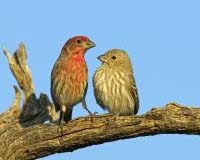| . |  |
. |
Philadelphia PA (SPX) Oct 01, 2010 Computational biologists at the University of Pennsylvania say that species are still accumulating on Earth but at a slower rate than in the past. In the study, published in the journal PLoS Biology, Penn researchers developed a novel computational approach to infer the dynamics of species diversification using the family trees of present-day species. Using nine patterns of diversification as alternative models, they examined 289 phylogenies, or evolutionary trees, representing amphibians, arthropods, birds, mammals, mollusks and flowering plants. The study demonstrated that diversity is generally not at equilibrium. Nonetheless, speciation rates have typically decayed over time, suggesting that the diversification of species is somehow constrained, and that equilibrium may eventually be reached. There are many competing theories for how species diversify and become extinct. Some suggest that species continually accumulate in time, always finding new ecological niches. Other theories suggest that the number of coexisting species is limited and that we will eventually have equilibrium. In other words, a species will be born only when another goes extinct. The question that intrigued the Penn researchers was whether species diversity on Earth is in equilibrium or is still expanding. They also wondered whether the world has an invisible stop sign on species diversity that would eventually limit the diversity on the planet. "What we see is diversification rates that are declining but not yet to zero," said Joshua Plotkin, assistant professor in the Department of Biology in the School of Arts and Sciences at Penn. "We are not yet in equilibrium. Either there is a limit to the total species number and we haven't reached it yet, or there is no such limit. But the rates of diversification are typically falling; when we will hit zero is not yet obvious." While it is clear that Earth has recently lost species due to human impact, this study dealt with much longer, geologic time scales. Understanding these long-term dynamics is central to our understanding of what controls present-day biodiversity across groups and regions. Even though the study did not deal with the current anthropogenic loss of biodiversity, researchers were surprised at how little extinction they actually saw in the evolutionary trees of species. The fossil record shows that many species have gone extinct over geologic time. For example, the diversity of whales has decreased during the last ~12 million years. But extinction was rarely apparent in this analysis of evolutionary trees. The study also shows how analyzing molecular phylogenies can shed light on patterns of speciation and extinction; future work may reconcile this approach with the fossil record. "By taking advantage of existing data from the flood of genomic research, we hope to combine efforts with paleontologists gathering fossil data," Plotkin said. The study was conducted by Helene Morlon and Plotkin of the Department of Biology in Penn's School of Arts and Sciences and Matthew D. Potts of the University of California, Berkeley.
Share This Article With Planet Earth
Related Links University of Pennsylvania Darwin Today At TerraDaily.com
 Ancient Genomic Fossils Of Hepatitis B-Like Viruses In Songbirds
Ancient Genomic Fossils Of Hepatitis B-Like Viruses In SongbirdsArlington TX (SPX) Oct 01, 2010 Biologists from The University of Texas at Arlington have uncovered virus fragments from the same family of the modern Hepatitis B virus locked inside the genomes of songbirds such as the modern-day zebra finch. The article marks the first time that endogenous hepadnaviruses have been found in any organism. An endogenous virus is one that deposits itself or fragments of itself into the chr ... read more |
|
| The content herein, unless otherwise known to be public domain, are Copyright 1995-2010 - SpaceDaily. AFP and UPI Wire Stories are copyright Agence France-Presse and United Press International. ESA Portal Reports are copyright European Space Agency. All NASA sourced material is public domain. Additional copyrights may apply in whole or part to other bona fide parties. Advertising does not imply endorsement,agreement or approval of any opinions, statements or information provided by SpaceDaily on any Web page published or hosted by SpaceDaily. Privacy Statement |